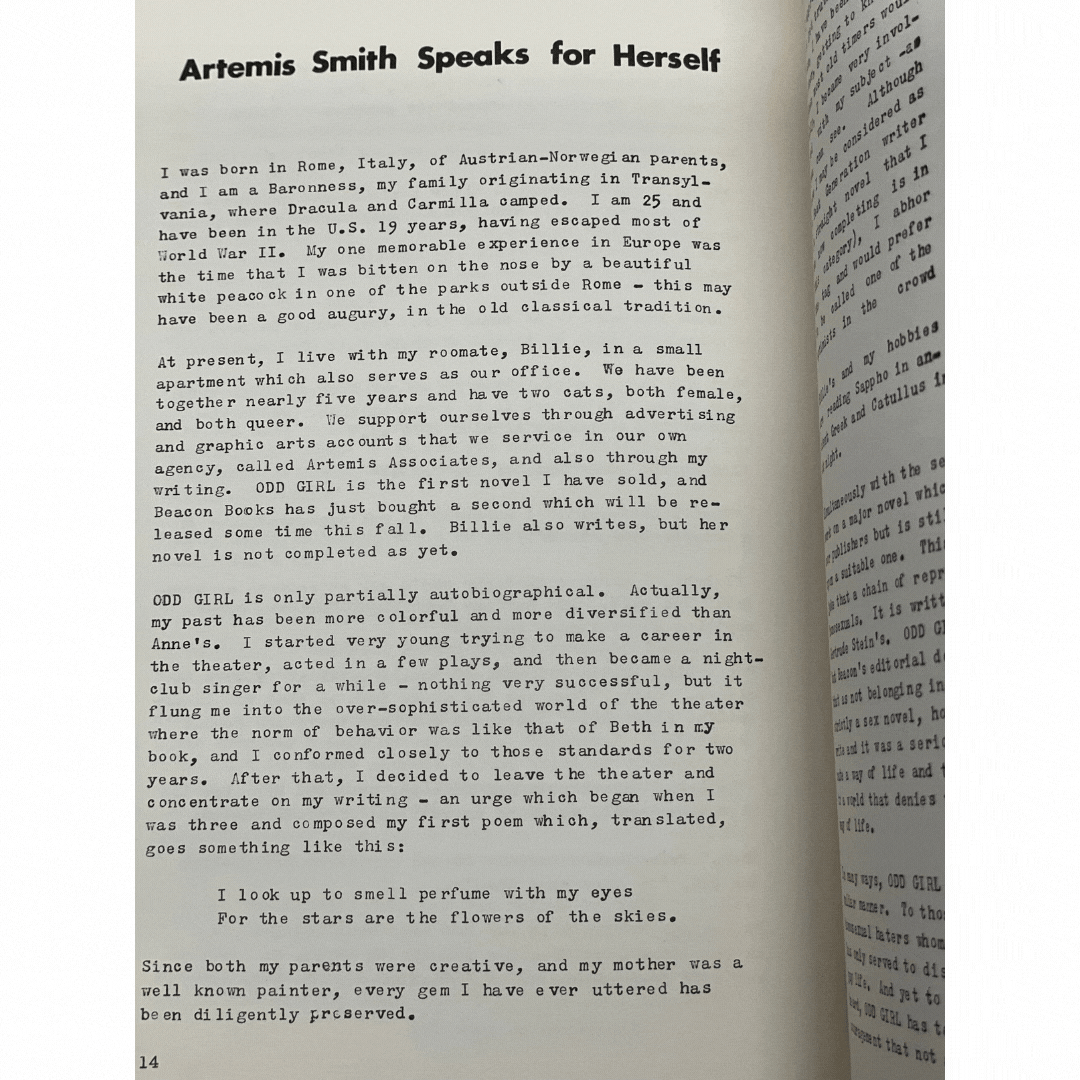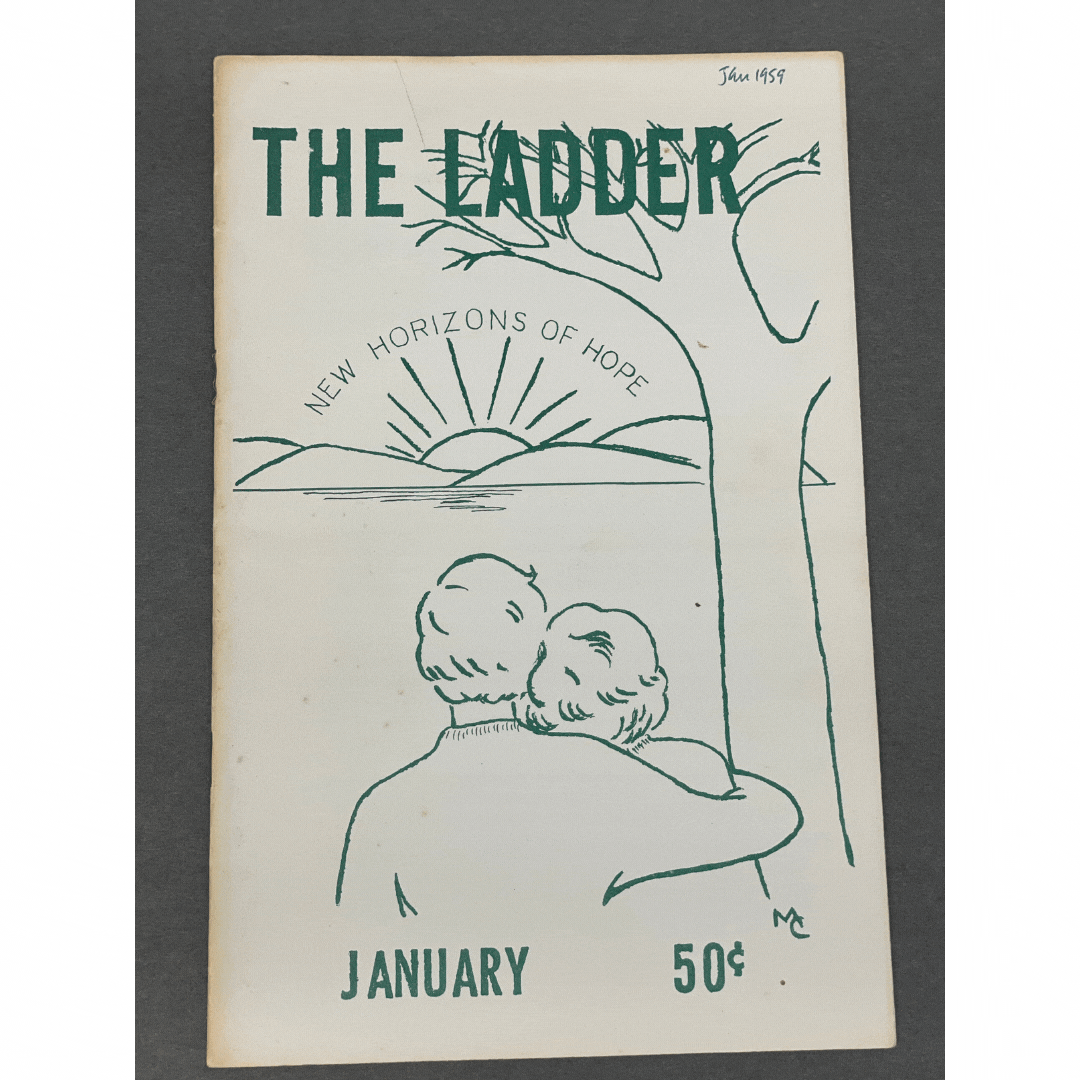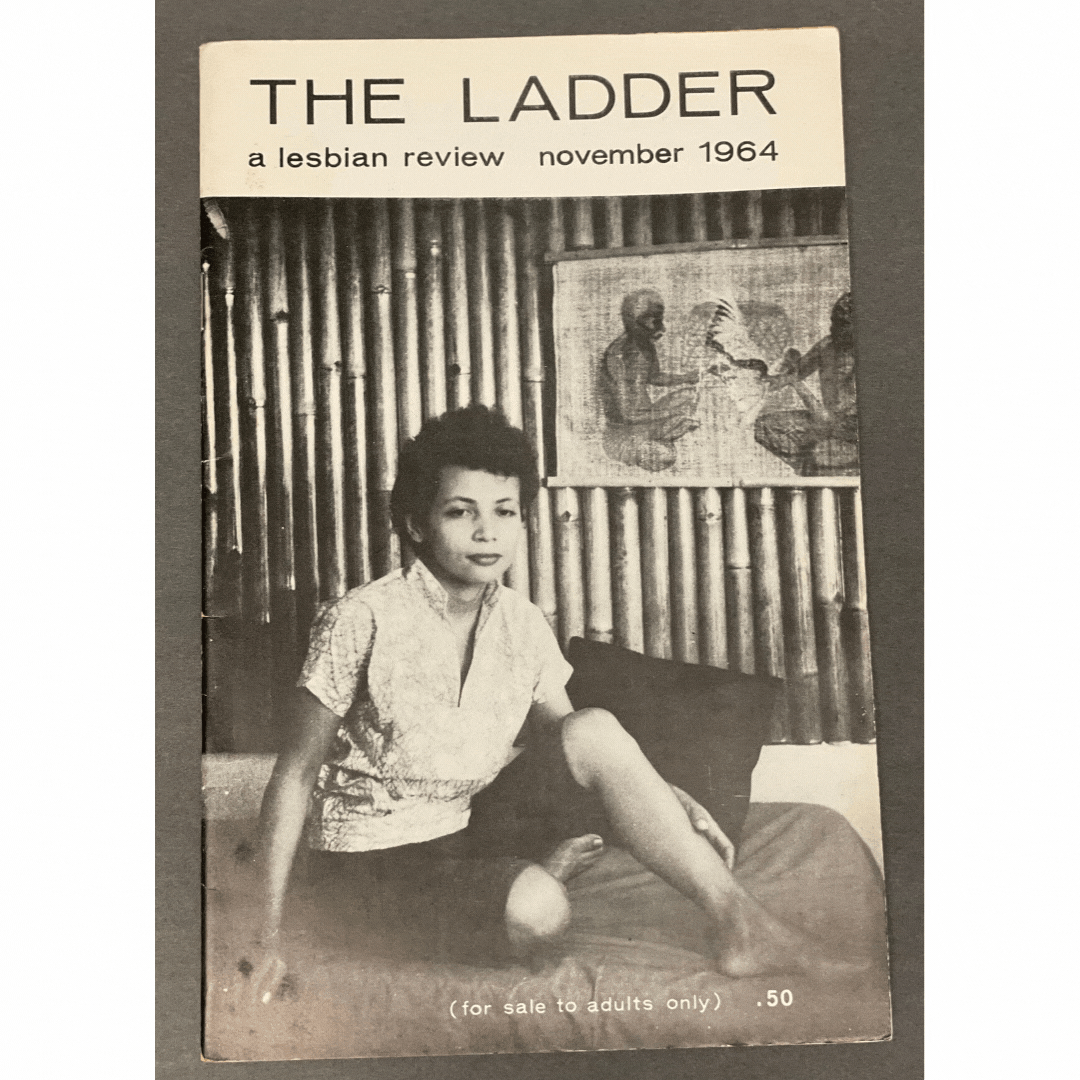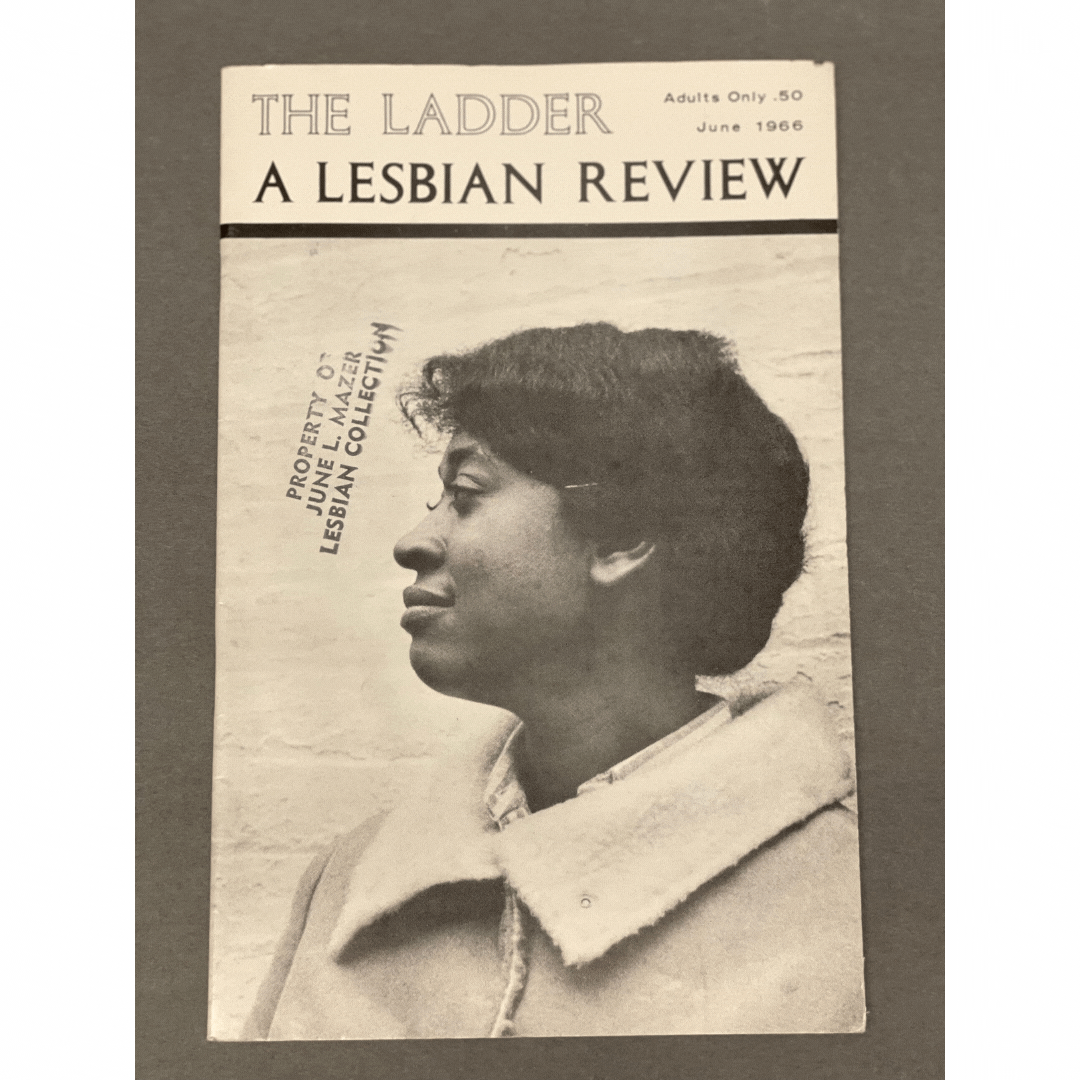Mazer Archives July 2022 Newsletter | Out of the Archives: The Ladder
The Ladder was the first nationally distributed lesbian publication in the US, running from 1956-1970 monthly. The magazine was started as a mouthpiece for the Daughters of Bilitis, which was the first lesbian civil rights organization in the United States. Founded in San Francisco in 1955, the Daughters of Bilitis sought to build lesbian community outside of gay bars, which were subject to raids and inquisitive eyes.
Del Martin and Phyllis Lyon, two of the original founders of the organization, recalled later, "Women needed privacy...not only from the watchful eye of the police, but from gaping tourists in the bars and from inquisitive parents and families."
The first edition of the Ladder appeared in 1955 and was edited by Phyllis Lyon. The early issues average 20 pages and had a zine-like process to their publication. The issues were typed on a typewriter then copied on a mimeograph and hand stapled. The Ladder’s content centered on book reviews, news, Daughters of Bilitis updates, poetry, short stories, etiquette advice, community events, and reader responses. Earlier issues avoided overtly sexual material and shied away from political commentary, but as the Daughters of Bilitis aligned with the Mattachine Society and the Homophile movement this began to change.
The Homophile movement, however, was focused on the integration and conformity of LGBTQ+ people into society, rather than agitating or being different in any way. This is reflected even in the Daughter of Bilitis’ mission statement, which was publishing in the front of every Ladder issue, declaring themselves “a women’s organization for the purpose of promoting the integration of the homosexual into society.” This statement included steps the organization intended to follow in order to achieve the mission statement, including education of the women (called “variants” in earlier issues rather than “lesbians”), education of the public about homosexual issues, participation in research projects conducted by psychologists, sociologists and “other experts directed towards the further knowledge of the homosexual,” and, finally, understanding and advocating for change in the laws regarding the lives of homosexual people.
This early mindset is reflected in the content and publishing method of the magazine. While contributors were encouraged to use their real names and be out, earlier issues also often debated wether or not women-- especially butch women--- should wear pants or should attempt to assimilate into hetereosexual culture; a move intended to show the straight population that lesbians aren't so different from any other women.
These views began to change with Barbara Gittings took over as editor of the magazine in 1963. She stopped using the word “variant” and put the tagline “A Lesbian Review” on the cover. The quality of the magazine was also upgraded, became longer, and moved from the mimeograph to professional printing. Photographs of lesbians began to replace the familiar line drawings. The 1965 issue has an amazing photograph on the cover of a butch woman in pants at the beach, visually showing the resolution of those earlier discussions of integration.
Readership of the magazine continued to grow over the years. In 1957, the Ladder had a few hundred subscribers on its mailing list. But by 1972, its subscriber list was over 4,000. And because the Ladder was shared with friends and read at social gatherings, it’s believed the readership was actually much higher.
However, as ideas began to shift on tactics for gay liberation, younger lesbians who did not share the concerns of older lesbians, began to join feminist, more radical organizations. Phyllis Lyon and Del Martin also left the Daughters of Bilitis for the National Organization for Women, and encouraged Ladder readers to do as well. Barbara Grier took over as editor and aspired to attract more women readers by updating the magazine again. This involved expanding the size of the Ladder as well as removing “a lesbian review” from the front cover. Convinced that the Daughters of Bilitis was falling apart, Grier and Daughters of Bilitis president Rita LaPorte conspired to steal the list of subscribers from the headquarters in San Francisco with hopes to keep the magazine alive and expand the readership.
This created friction within the organization and Grier ultimately left the Daughters of Bilitis, taking the Ladder with her. By 1972, funds ran out and publication ceased. Over its 14 year run, The Ladder connected lesbians across the country and the globe, and had become a safe place for women to discuss art, sexuality, feminism, and to learn about themselves and others like them. In short, it helped lesbians feel less alone in a time of relentless oppression from the government and police.
Today, despite its relatively short run, it remains an important part of our collection by giving us insight into the lives of lesbians from the mid 20th century, as well as their struggle to build community and find acceptance.









